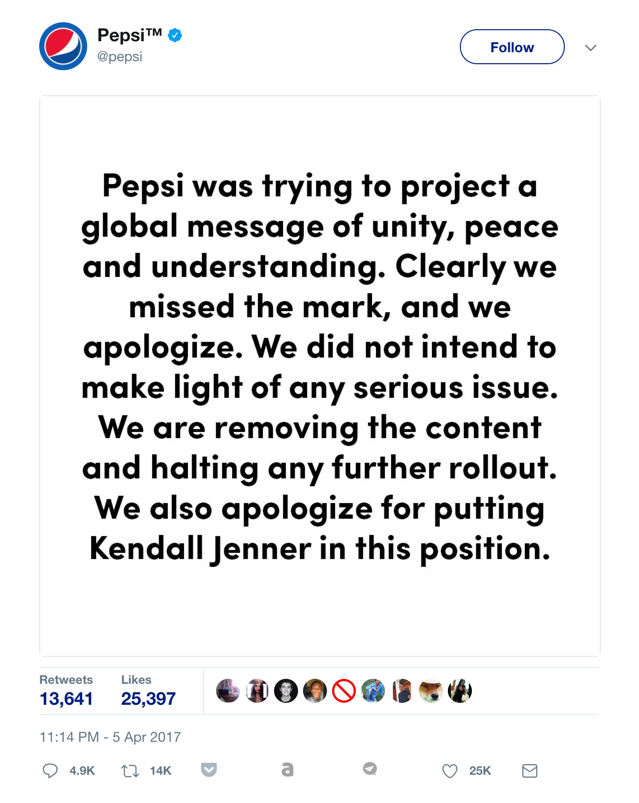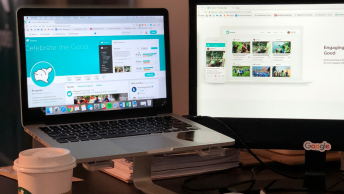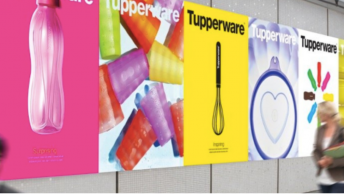Sometimes brands use highly controversial branding campaigns, and through social sharing, the campaign manages to popularize the brand above expectations. But sometimes, this controversy destroys the brand’s positive image. Find out if controversial branding campaigns are right for your business.
“Controversy increases the likelihood of discussion at low levels, but beyond a moderate level of controversy, it actually decreases the likelihood of discussion.”- Wharton School of Business
Are Controversial Branding Campaigns Worth It?
Let’s take a look at the pros and cons of controversial marketing under the lens of two different examples:
1. Donald Trump’s Presidential Campaign

The Pro:
He was able to develop a powerful presidential campaign using shock marketing. He transformed himself into a respected politician, he used the “shock” factor of his excessively bold personality to gain supporters and created a trustworthy image for his followers.
The Con:
Among many other things, he was offensive to several populations in America, he sparked mass hatred and he may not be taken seriously in the long run.
2. Starbuck’s “Anti-Christmas” Red Cup

The Pro:
It generated buzz, and Starbucks achieved higher sales because the news story put it on consumer’s minds. In fact, there was a red cup featured on Instagram once every 14 seconds.
The Con:
It offended a portion of the Christian population, and it drove out traffic from those negatively affected.
Based on these examples, you decide if controversial branding campaigns are worth it. As consumers continue to be inundated with messages, perhaps they will get their attention. Do you agree? Let me know in the comments section.
Using Publicity Stunts As Apart of Controversial Branding Campaigns
Controversial branding campaigns can be beneficial for companies as they directly increase customer attention. However, as I mentioned earlier, there are pros and cons to consider.
The Success Factor
The success of controversial branding campaigns is that they may garner a large audience and receive a positive reaction from the majority.
However, if the campaign turns off the majority, the campaign is unsuccessful, despite the increase in publicity.
Good & Bad Publicity Stunts
Good publicity stunts are able to attract attention to a brand because they reveal shocking events. On the other hand, bad publicity stunts may cause the brand to look foolish because their practices were counter-productive.
Likewise, any entity loses respect if people label its activities as a publicity stunt. This is because publicity stunts redirect attention from real stories and focus the attention on something superficial, meaningless, and silly.
Good Example:
Virgin Atlantic
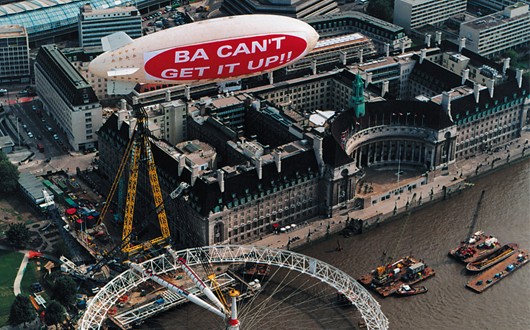
When rival airline British Airways ran into construction problems with its London Eye, Virgin Atlantic hijacked BA’s press launch by arranging for a branded airship to do a fly by – carrying a cheeky message.
Bad Example:
LifeLock
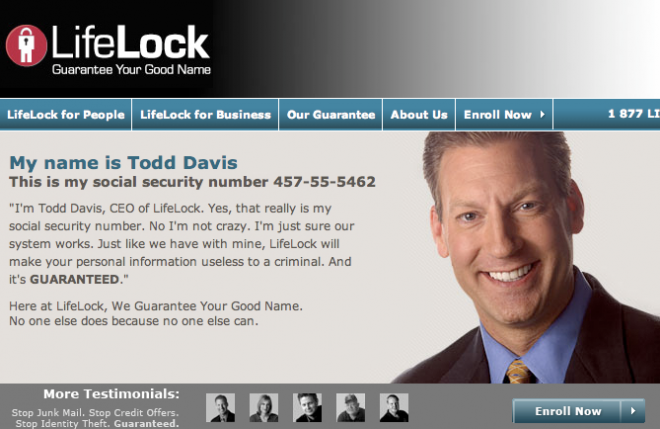
LifeLock CEO Todd Davis for putting his social security number on advertisements across America. In 2007, it was widely reported that Davis’ publication of his social security number had resulted in a $500 loan being taken out in his name. Then, In 2010, Davis had been the victim of identity theft no fewer than 13 times.
How to Create Controversial Branding Campaigns For Your Business
If done right, creating controversy could be a great marketing strategy. But again, you need to make sure that you don’t overdo it. While positive marketing can have a fleeting effect, negative marketing can cause irreparable harm to a brand (especially a new brand).
But you need to know that by creating some “good” controversy, your brand could very easily become the “next big thing”.
Here’s how you should start…
Step 1. Choose The Level Of Controversy
You need to figure out how to create enough controversy to engage the audience in conversation, but not enough to push them away.
There are two main types of controversy:
1. Debatable

Racist acts are often debated but most people can agree that racism is bad. The ad above may offend racists, but non-racist may find this image funny. The debatable type of controversy is often the safest position when developing a controversial branding campaign as it doesn’t necessarily prove a point but sparks controversial debate.
2. Shocking/Taboo
Taking this position will not guarantee a positive or negative impact on the minds of the majority of your supporters. You should use caution when developing a shocking campaign.
Here is the world famous controversial campaign of “Kissing Nun” by United Colors of Benetton:
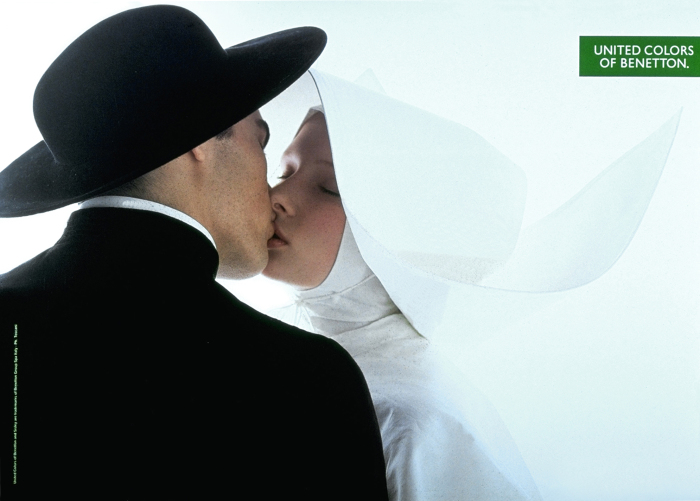
This campaign addressed strongly contrasting opposites with acceptance of multiculturalism, difference, and a sense of equality.
While shocking ads have the power to catapult a brand into the limelight, they can also drastically hurt a brand’s image.
Step 2. Connect The Controversy With Your Brand
The RIGHT Way to Connect Controversy with Your Brand
Creating controversy for the sake of controversy is the formula for a dangerous reaction. It will not deliver the results you’re looking for, especially if the campaign doesn’t tie back to your brand’s core message.
A good example is the Ad Council’s “Love Has No Labels” campaign.
This campaign ties back to the brand’s core message which is:
The Ad Council produces, distributes and promotes campaigns that improve everyday lives. Our memorable work inspires ongoing dialogue, engagement, and action around significant public issues, creating a measurable difference in society. – Ad Council
Searching for and regurgitating a debatable topic is not enough to effectively promote your brand.
You have to be clever enough to associate the controversy with your brand.
The WRONG Way to Connect Controversy with Your Brand
The attempt to commercialize activism was the main reason why Pepsi missed the mark with its campaign. They positioned the brand as a potential solution (based on consumer perception) to the controversial protests of racial inequality taking place during that time. This campaign backfired.
Bernice King, a daughter of Martin Luther King Jr., was among those who commented on the tone-deaf nature of the ad.
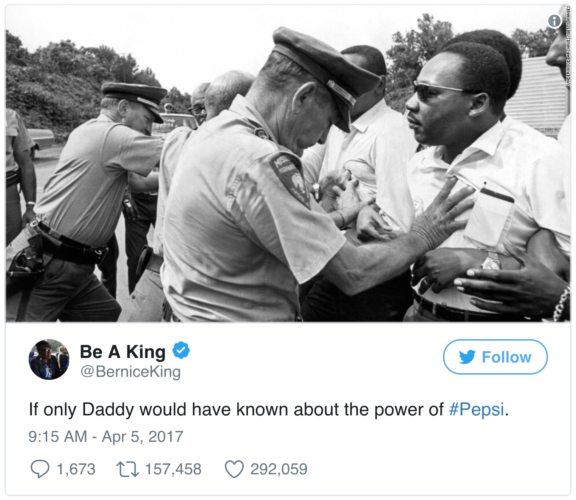
Pepsi later apologized for its attempt…
A very important lesson here is to understand the challenges of your target audience before creating controversial branding campaigns. Clearly, Pepsi completed all the ‘checkboxes’ for incorporating its brand into the message but it did not incorporate consumer perception of the connection.
What do you think of Pepsi’s campaign? Would it have been perceived differently in 1985? Let me know your thoughts in the comment section.
Step 3. Set Up A Crisis Management Plan
As you now know, a controversial campaign may have a boomerang effect on a brand.
You have to be daring enough to take a chance, but you still need a backup plan prepared just in case it doesn’t go as well as you may have wanted.
You may even have to face legal consequences, and that would not only be detrimental to your brand’s image but also to your bottom line.
SEE ALSO: Establishing Brand Boundaries
How to Make Controversial Branding Campaigns Work For You
To get the best results, your content needs to get people talking.
A caveat to adding a contentious angle, however, opens the door for people to criticize your content, so here are some ways to minimize any risks.
Understand there are different forms of controversy and stick to what’s appropriate for your brand
Brands should look for the “sweet spot,” where an issue generates enough heat to elicit interest but stops short of making people uncomfortable.
Brands should also realize that a little provocativeness goes a long way. There’s virtually no scenario in which they stand to gain by stirring up highly charged emotions—and there’s a big downside to crossing the line.
But as long as you’re mindful that respect, credibility, and key messages are all incorporated into your controversial branding campaigns, you’re inviting engagement from both sides of the fence—and that’s a win-win for many campaigns.
SEE ALSO: 4 Reasons Why Consumers View Brands As Relationships
Final Thoughts
Using controversial branding campaigns is something that is becoming more and more acceptable by brands. If done the right way, it can be a great way to get your brand noticed. If a controversial campaign backfires, it can do more harm than good to your brand.
Use caution when executing controversial branding campaigns as you need to predict all possible reactions before introducing it so you can determine if it is worth the time and money you are spending.
Is it better to focus on traditional or controversial branding campaigns? I would love to know your thoughts in the comment section below…



